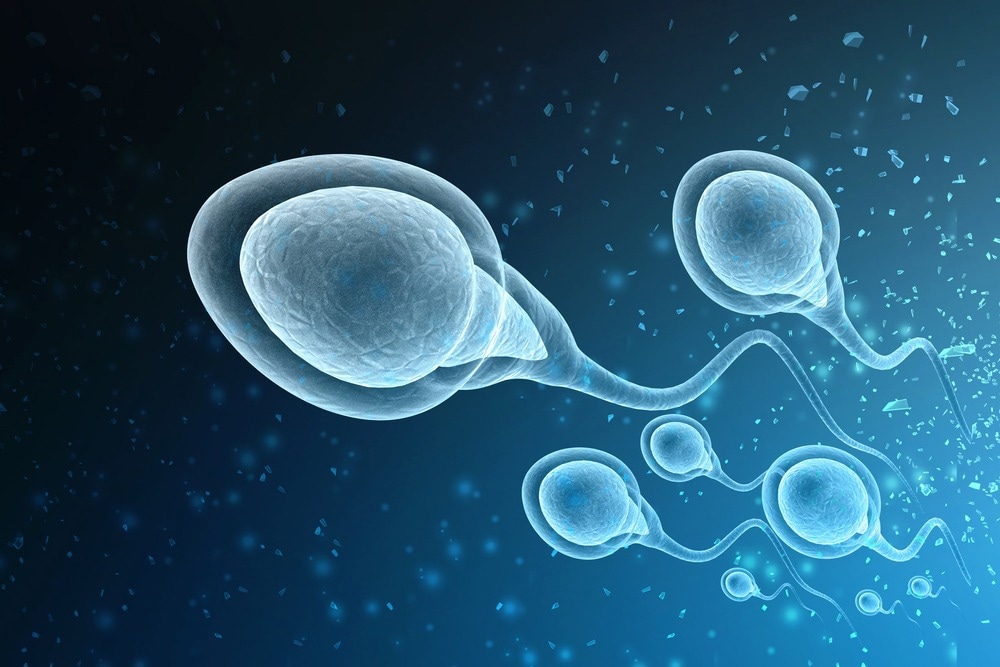In a recent study published in Cells, researchers explored the molecular and cellular mechanisms of severe acute respiratory syndrome coronavirus 2 (SARS-CoV-2) infection.
 Study: Cellular and Molecular Mechanisms of In Vivo and In Vitro SARS-CoV-2 Infection: A Lesson from Human Sperm. Image Credit: WHITE MARKERS/Shutterstock
Study: Cellular and Molecular Mechanisms of In Vivo and In Vitro SARS-CoV-2 Infection: A Lesson from Human Sperm. Image Credit: WHITE MARKERS/Shutterstock
Background
Although the respiratory system is the major target of coronavirus disease 2019 (COVID-19)-causing SARS-CoV-2, studies have suggested that the male reproductive system could potentially be another target organ for the virus. Understanding the impact of COVID-19 on testis and sperm is essential for reproductive biology and developing reproductive medicine.
About the study
In a recent study, researchers demonstrated the expression of essential molecules such as angiotensin-converting enzyme-2 (ACE-2), transmembrane serine protease 2 (TRPMSS2), basigin (BSG), and cathepsins L (CTSL) and their role in SARS-CoV-2 entry in the host cells in human testis as well as ejaculated sperm.
For in vitro studies, the team enrolled 20 Caucasian males aged 30 ± 4.5 years who underwent semen evaluation at Siena University Hospital. The complete clinical history was collected for all the participants. Additionally, testis samples were collected from 10 patients aged 31 ± 2.5 years and had undergone diagnostic testicular biopsies. None of the enrolled patients were treated with radiotherapy, chemotherapy, and hormonal therapy. The study also involved the ultrastructural analysis of sperm collected from a 40-year-old man who had mild COVID-19 as diagnosed via reverse transcription-polymerase chain reaction (RT-PCR).
Semen samples were collected after three to five days of sexual abstinence. Subsequently, standard semen analysis was conducted, and all participants enrolled in the in vivo studies were analyzed for main sperm parameters such as morphology, concentration, total motility, and progressiveness. The sperm samples were further treated for transmission electron microscopy (TEM) or for immunofluorescence for gene expression analysis. The sperm cells were infected with the SARS-CoV-2 strain EPI_ISL_2472896 and titrated by plaque assay.
Results
The study results showed that BSG was found at the highest concentrations in the testis and sperm, and ACE2 was expressed at higher concentrations in the testis than in sperm. CTSL was expressed at comparable levels across the samples, and TMPRSS2 was found at low levels in sperm but was undetectable in testis samples. Furthermore, ACE2, CTSL, BSG, and TMPRSS2 were co-localized with insulin-like peptide 3 (INSL3), a Leydig cell marker. CTSL and BSG also displayed less-intense staining in the Sertoli cells. Compared to other co-receptors, TMPRSS2 had a lower intensity with localization limited to the Leydig cells.
Assessment of subcellular localization of ACE2, BSG, CTSL, and TMPRSS2 in ejaculates sperm showed that ACE2 had more intense staining in the tail portion andTMPRSS2 and BSG had white, faint staining in the midpiece section of the tail. CTSL displayed the most intense staining of the whole sperm tail. Furthermore, quantification of SARS-CoV-2 ribonucleic acid (RNA) after in vitro infection resulted in viral RNA titers that were 2.6 times higher in infected sperm cells with viral absorption (ADS) as compared to those without viral absorption (No_ADS), which indicated that viral adsorption increased the physical association between the sperm cells and virus.
Additionally, the viral RNA titer was 4.0-fold in the ADS and 2.4-fold in the No_ADS compared to the virus control, which confirmed the digital droplet PCR (ddPCR) signal obtained from sperm cells derived from the specifically bound virus was different than the residual virus inoculum. TEM of sperm obtained from seronegative participants exposed to SARS-CoV-2 displayed sperm-associated, virus-like particles. Moreover, some of the infected cells had cytopathological variations across the entire cell. Specifically, vesicles present in the cytoplasm that resembled the double-membrane vesicles (DMV) were detected in the infected cells.
Conclusion
The study findings showed that SARS-CoV-2 could infect ejaculated sperm while there existed specific localization of molecules that mediated interactions between SARS-CoV-2 and host cells within the male genital tract. The researchers believe that the present study could hold translational importance and facilitate the development of therapeutic as well as preventive approaches against the transmission of COVID-19 infection via sperm.